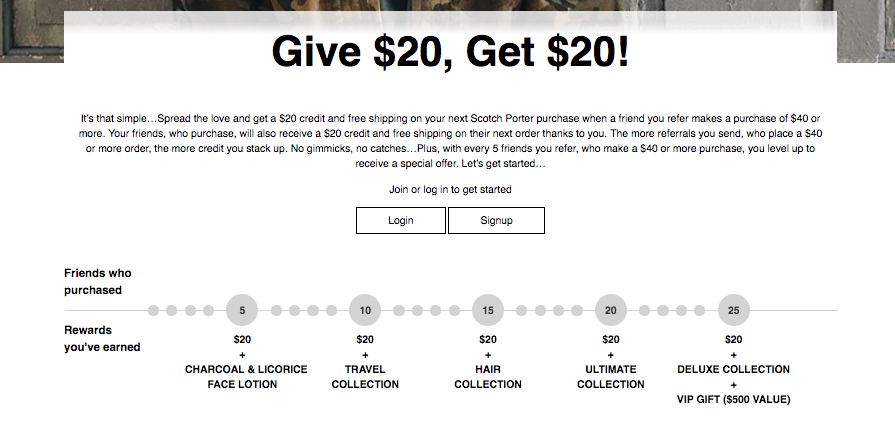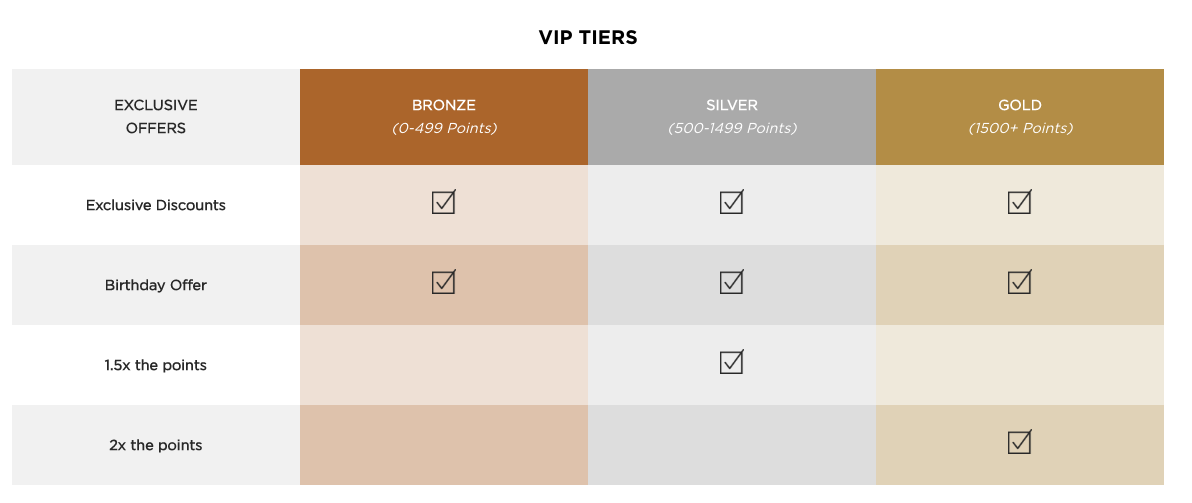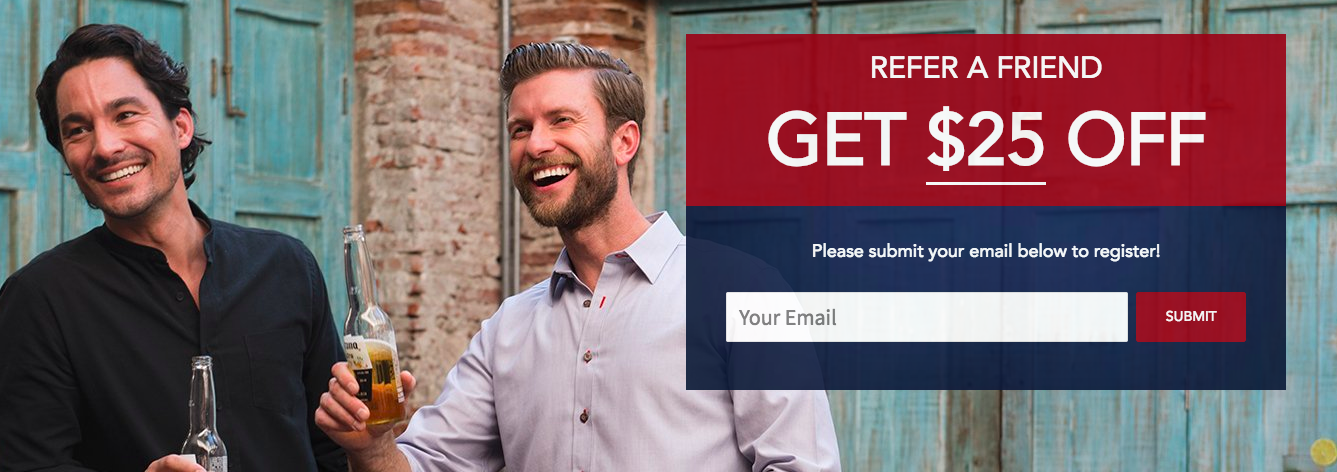Referral marketing is well documented as a powerful tool for ecommerce businesses. This strategy yields countless benefits for merchants and helps put them on track for success. A well executed referral program has the ability to decrease average customer acquisition cost, increase overall impressions, and grow average customer lifetime value. These are core metrics that lead to sustained growth over the long term.
From a consumer perspective, you’ve likely seen these programs all over the internet. Think about all the “Give 10, Get 10” promotions out there you’ve seen. From messages flooding your inbox to retargeting ads to homepage banners, businesses are not shy about asking customers to make referrals. For the reasons we mentioned above, this makes a lot of sense because referral programs flat out work.
But is this classic give 10 get 10 structure optimal for every business?
Sure, customers who receive this incentive will make referrals and introduce new, high performing customers to your brand. This is beneficial for every ecommerce store, but what happens if they want to refer more than one of their friends? What happens after they’ve received 3 $10 off coupons. Or 5 of them, or 10?

At some point, that $10 off coupon starts to get a little stale.
These people who are active referrers are also the most likely to continue to look to share your store with other friends, but at some point, as we mentioned, the $10 off coupon loses its luster. Referral programs are all about offering enough of an incentive to your best customers, and that reused incentive diminishes in value over time. Those high performing referrers are looking for a way to continue to be excited about your program and earn value over time.
We are proud to announce that Swell now allows stores to set up a referral-based VIP program for a more comprehensive customer experience that yields even better results.

How does a referral based VIP program further increase brand advocacy?
We’ve already established that referral programs are powerful tools for ecommerce stores. So how does incorporating referrals into your VIP program take your referral program to the next level? This is where basic psychology begins to play a major role. VIP programs manufacture additional engagement and revamp referral programs due mainly to three core principles; perceived value, perceived relationship investment, and exclusivity.
Driving up perceived value sustains advocate motivation
For shoppers with more technical and calculated decision making processes, driving up incentive value is a necessary tactic to maintain your best customers’ desire to share your brand. This necessity can be explained by a foundational economic principle called the law of diminishing returns. This law stipulates that beyond a certain point, certain actions yield less and less utility, or value. When you binge on cookies, for example, the first cookie tastes a whole lot better than the last one.
In our situation, this law answers the question we asked earlier in the blog post. What happens when someone refers 10 friends in a “give $10 get $10 program”?
When the shopper refers the 10th friend, that $10 off coupon that they receive is worth a fraction of what the first $10 off coupon was worth to them. Each time they receive that discount, it becomes less and less valuable to them until the point where the discount is all but worthless.
VIP tiers are designed combat diminishing returns. Rather than allowing your discounts to become stale for repeat referrers, allowing high performers to “level-up” in your program and earn additional or brand new discounts has a resetting effect on the perceived value your customers receive.

High perceived relationship investment yields an equivalent return
Perceived relationship investment is a principle we’ve discussed previously on the Swell blog. Its definition is relatively self-explanatory (perceived relationship investment is how much someone believes you are investing in your relationship with them).
People are inherently emotional, and emotions typically play a major role in the decision making process. Most shoppers do not fully financially quantify offers and promotions from the brands they work with. More often than not, they care heavily about perceived relationship investment. In other words, they want to know that a brand cares about them and their experience. Offering tiers for high performing referrers is an effective way to give your customers what they want, without having to deplete your profits.
Giving your shoppers access to a new tier and an exclusive offer or two shows that you recognize them as top performers and are willing to offer them something more than the standard discounts in exchange for their advocacy and loyalty.
Exclusivity fosters high performance
Exclusivity is a well established driver of human behavior. People want what they can’t have and they tend to value what other people don’t have even more. VIP tiers take advantage of this base desire by creating levels, which each imply inherent status.
Even leaving additional incentives aside for now (which drastically empower tiers), consider a shopper who is deeply invested in a particular brand. This shopper will be motivated to show that they are more important and valuable than the average customer and will strive for the highest tier.
This phenomenon is relatively ubiquitous in society and is similar to the feeling that makes people want to be the first one picked on a team or invited to an exclusive party. Earning a high tier is a symbol of achieved status that customers will improve their performance in order to reach.

How to Structure a Referral-Based VIP Program and Motivate Brand Advocates
We’ve now covered why combining your referral program with your VIP program is powerful. So how do you set up your referral-based VIP program to maximize results? We’ll cover the two fundamental aspects of your program; base incentives and supplementary incentives.
Choosing an affordable, yet effective base incentive
Deciding your “base incentive” is a largely economic decision. Ultimately, the base incentive that you select will have the most direct impact on how much profit you make off of each of your referrals. Choose an incentive that is too generous and you may be cutting into the benefits you receive from your program. Choose an incentive too stingy and you may not be sufficiently motivating shoppers to get involved.
Thankfully, most shoppers are not overly price-sensitive when it comes to setting your incentives. Selecting a base incentive that is in the right ballpark of what shoppers are expecting should get you the results you’re looking for. This is why “give $10 get $10" style programs are so popular. Once stores have pinpointed an estimate of the optimal base value, the marketing and language surrounding the program is more important to its success than relatively negligible fluctuations in value. In other words, “refer a friend and earn $12.50 for their first purchase!” sounds a lot less catchy than “Give 15, Get 15!”.

Image via UNTUCKit
As a guideline for locating your optimal base incentive, we recommend using your customer acquisition cost. Your customer acquisition cost is the amount of money you are saving by having your current customers acquire new customers for you. Staying below this amount while keeping shoppers interested will help you reach your goals.
Finding “supplementary incentives” that excite your customers
We define a “supplementary incentive” as any additional perks or value you offer to shoppers in addition to the primary discount-focused “base incentive” for your VIP tier. Unlike base incentives, the decisions you make surrounding supplementary incentives should be much more qualitative.
Start by identifying and studying your high-performing customers. What products do they like? Do they share any other general interests? Is there anything new they would like to see from your brand?
Finding answers to these questions is the best way to inform your decision surrounding which perks aspiring “top-tier” customers would get excited about earning.
If you have questions about getting a referral-based VIP program launched with Swell, reach out to us at team@swellrewards.com. A member of our team will be in touch to help you get set up.






